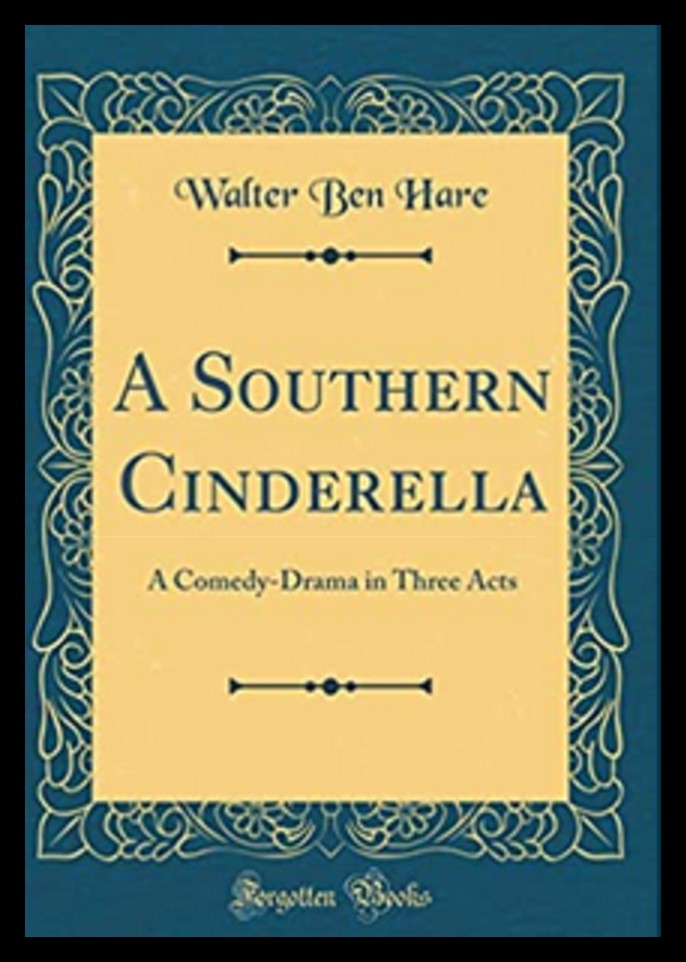The Elizabethville Echo of January 26, 1926, reported the following about a black-face play that was to be presented by the teacher and pupils of the Holtzman School, a one-room school house in Washington Township, Dauphin County, Pennsylvania:
“SOUTHERN CINDERELLA” AT HOLTZMAN’S SCHOOL
“Southern Cinderella, a three act play will be given February 9th if weather conditions permit. If not it will be rendered the first favorable night. The play will be given by the pupils of Holtzman’s School who will enact the following characters:
Madame Charteris – An Old Aristocrat – Grace Schaffer
Enid Bellany – Southern Cinderella – Anna Latsha
Miss Rosie Winterbury – A famous settlement worker – Catharine Holtzman
Miss Johnnie Belle Randolph – A little coquette – Mary Holtzman
Katherine Hawke – An English nurse – Arlene Shaffer
Caroline Hawke – Her sister, an adventuress – Beulah Latsha
Madame Judy Johnson – a black blue grass widow – by teacher
The article then went on to give a synopsis of the play and concluded with the following:
Come and find out what happens. It will only cost you twenty-five cents. And its for a good cause. The benefit of school children. Children will be admitted for 10 cents.
Another article appeared in the Lykens Standard of March 26, 1926, giving the postponed date of the play and naming the teacher:
WASHINGTON TOWNSHIP SCHOOL TO PRESENT PLAY
A play entitled “A Southern Cinderella” will be given by Holtzman’s School of Washington Township, on April 6, 1926….
Mammy Judy Johnson – a black Blue Grass Widow – Lois McClure
________________________________________
A Brief Description of A Southern Cinderella:
A Southern Cinderella, a racist, three-act comedy-drama by Walter Ben Hare written and published in 1913, was performed many times in the Lykens Valley area. An all-woman cast includes a character, “Mammy Judy Johnson,” who the playwright describes as follows:
MAMMY JUDY – Aged forty. Black-face and hands and negro wig. May be very fat. Red cliico skirt. Blue calico sack. Large gingham apron. White dusting cap coquettishly trimmed with pink paper muslin.
The overall description or synopsis of the play provided by the playwright is as follows:
Twenty years before the opening of the play, Madame Charteris, an old southern aristocrat, banishes her only child from her house because of an unsuited marriage. She remains broken-hearted all the years, but blindly held in check by the Charteris pride. Her daughter dies in poverty leaving her only child, Enid Bellamy, to eke out her living in the cotton mills. An old friend of her mother’s and a settlement worker, Miss Rosie Winterberry, finds her fainting from hunger at the loom. She takes her away and appeals to Madame Charteris in behalf of her grandchild. Madame has become an invalid and is completely under the influence of her nurse, and unprincipled English woman. Madame makes a will leaving her entire fortune to the nurse and her sister. Madame refuses to allow Enid to come to her house, but the sight of her grandchild’s suffering softens her heart and the little white room is opened for the first time in twenty years and Enid comes home.
Mammy Judy Johnston, the old black servant, decides to get married and Miss Winterberry and Enid attend the wedding, much to the disgust of Caroline Hawke. Madame determines to make a new will in favor of her grandchild and summons Mr. Deems to draw up the document. The will is made and the nurse and her sister are the witnesses. Katherine Hawke, the nurse, secures the new will and determines to burn it. Mammy Judy returns from the church in a towering rage, having been deserted at the altar by the prospective groom. She has the wedding license and by mistake the nurse gets this and burns it thinking that it is the new will. Madame dies and as the new will cannot be found the nurse and her sister are declared the heirs. They vainly try to enter society and treat Enid, the real heiress, like a common servant. On the night of the inaugural ball, two years after the death of Madame, Mammy Judy finds the will and the Southern Cinderella comes into her own.
Throughout the play, Mammy Judy, always played by a white woman in black-face, delivers all her lines in stereotypical dialect, some of which is included below:
- “I’se addrssin’ you.”
- “Yas’m.”
- “I’m gwine to leave…”
- “My lawsy lands!”
The man who left Mammy Judy at the altar was named Amos Peters, who was not a character in the play, but was described by Mammy as “de cream colored pick ob de unplucked colored aristocracy, so light complected that he belongs to de fair sex.” The man she eventually decides to marry is named Sassafras Rigger.
The villain, Katherine Hawke, a nurse, is provided a “magnificent ecru gown of silk chiffon with overdress of ecru lace, heavily spangled.” Likewise, her sister, Caroline Hawke, was dressed in “a trailing ball gown of green satin with an overdress of silvered lace and spangles.” In the program synopsis for Act II, it is stated that “Caroline disapproves of negro weddings.“
_____________________________________
News articles were obtained from Newspapers.com. The script cover is from an Amazon.com ad for a reproduction copy of the script available from Forgotten Books. The script is also available as a free download from Google.
Corrections and additional information should be added as comments to this post.
